
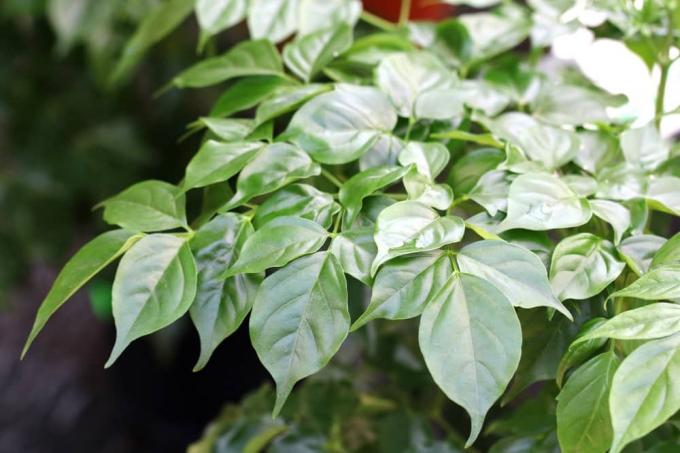
Table of contents
- Location
- outdoor location
- substrate
- Pour
- Fertilize
- Cut
- repot
- propagation
- hibernate
- Diseases
- pests
On other continents nature is sometimes more luxuriant at work than here. We cannot offer these plants the climate they love in our gardens. However, when it comes to a green sight in our rooms, the Asian room ash can move in immediately. The leaves develop quickly and are easy to please. A plant for plant lovers without a green thumb.
Location
The ash tree, or Rademachera sinica as it is botanically known, is naturally designed to be an outdoor plant. However, a permanent place to stay outdoors is out of the question for this Asian trumpet plant in our latitudes. It is therefore important to offer her a space that is sufficient for her and also gives her a great age. The location in it should combine the following characteristics:
- a lot of light
- no blazing midday sun
- keep a sufficient distance from south-facing windows
- or soften the sun's power with a curtain
- the usual room temperature is ideal
- in winter it can be 12 to 16 degrees Celsius
Tip:
The Rademachera with its green leaves not only ensures healthy indoor air, it also loves it. Rooms in which your cigarette smoke is constantly blowing around the leaves are harmful to your vitality in the long run.
outdoor location
At an appropriate time, being outdoors can please any Rademachera sinica. The preparations for such an excursion can begin as soon as the last frosts have passed.
- from mid-May to September
- on the balcony or terrace
- semi-shady to sunny
Although the winter wait was long, the move should not be hasty. The ash tree should only take its new place step by step, so that the intensity of the sun does not catch it unprepared.
substrate
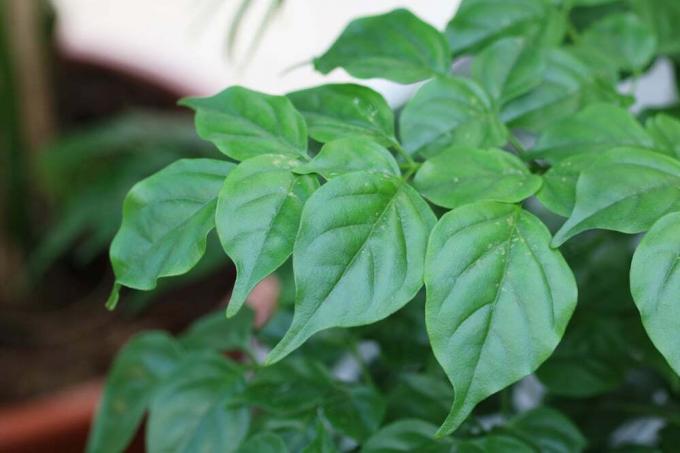
When planting an indoor ash, you don't have to spend a lot of money on expensive special soil. This plant is content with the commercially available soil for potted plants, which is made on the basis of compost. To increase the permeability of the substrate, you can enrich the soil with some coarse material before planting. Lava granules and expanded clay are ideal for this.
Pour
This Asian plant probably brought a penchant for balance with it from its homeland. For watering, this means it can be too wet or too dry. Extreme fluctuations are not tolerated and are promptly answered with loss of leaves. The water supply should therefore ensure the following:
- only slightly moist substrate
- consistent day after day
- coaster or Fill the cachepot with some expanded clay
- this prevents wet roots
So-called immersion is ideal for watering the Rademachera. As soon as the surface of the soil has dried, the plant is dipped in a bucket of lime-free water. When no more bubbles rise, it is taken out again and, after draining, put back into the saucer or bowl. planter set.
Tip:
Compensate Rademachera sinica for dry ambient air by misting its leaves with lime-free water every 2-3 days.
Fertilize
The consumption of nutrients is low, so fertilization can be modest. During the main growing season from April to September, it is sufficient if a commercially available liquid fertilizer for indoor plants is administered over the irrigation water once a month. From October, the interval will be increased to two months. If the room ash has taken a break in a cool place in winter, the fertilizing should also rest completely.
Cut
The ash tree tolerates being hit with scissors well, which is why there is no need to be reserved when it comes to pruning. You should only wait for spring, as it is ideal for cutting this houseplant. In the following cases, it benefits from the removal or Shortening their branches:
- Pinch shoots of young plants regularly
- this ensures a bushy growth
- cut back vigorously in the event of strong growth and a lack of space
- remove shoots weakened by lack of light
- especially necessary after a cool hibernation
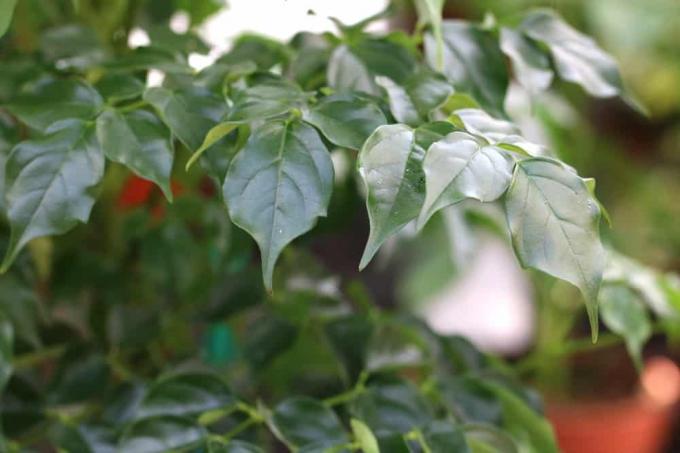
With all pruning measures, keep in mind that the ash tree will find it difficult to sprout again from the already woody parts. Therefore, limit such cuts to a minimum that is absolutely necessary.
repot
The plant keeps growing while the pot remains as it was created in the factory. At some point the two no longer fit together. The separation is inevitable and should be carried out promptly as soon as the pot is fully rooted. Spring is the best time for repotting indoor ash, then the roots can immediately dare to conquer new areas in the approaching growing season.
- Get a larger pot with drainage holes, substrate, and some expanded clay.
- First fill the new pot with expanded clay as a drainage layer.
- Then put some substrate over it.
- Remove the plant from its old home and shake out most of the old soil from the root ball. If this is difficult to remove, you can also spray the pads with a jet of lukewarm water.
- Place the plant in the center of the new pot so that the original planting depth is retained.
- Fill in the gaps with substrate. Press it down again and again so that no unfilled gaps form.
- Water the newly instilled plant well.
propagation
The ash tree could be propagated from seeds, but that is hardly feasible in this country. This is because the seeds required for this are rarely commercially available and the plant does not flower in closed rooms far from its homeland and therefore does not want to deliver seeds. What she is not stingy with, however, are the green shoots, which can be wonderfully used as cuttings for propagation.
- Cut cuttings in spring
- ideally combined with cutting measures
- the head cuttings should be 10-15 cm long
- leave only the top pair of leaves, remove the remaining leaves
In order to grow new young plants identical to the mother plant from these cuttings, you will also need the following materials and utensils:
- suitable soil, such as B. Pricking soil or a peat-sand mixture
- small growing pots with coasters
- one clear plastic bag per pot
- per pot 3 wooden sticks of approx. 20cm length
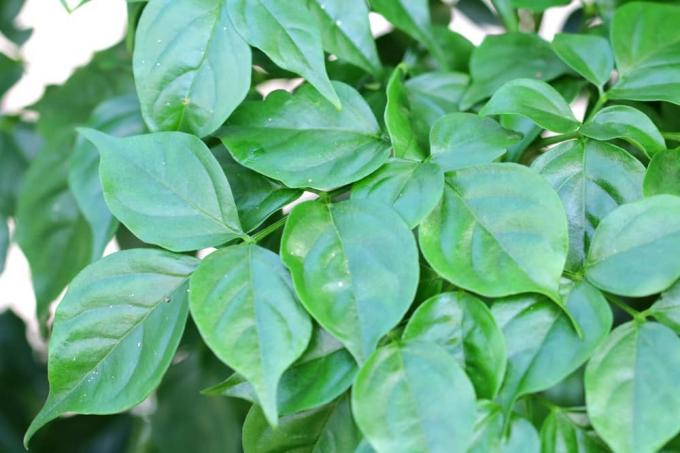
Once you have everything you need, here's what you can do:
- Fill the seed pots with soil.
- Place a cutting in each pot so that only the upper third of it sticks out of the ground.
- Water all cuttings from below.
- Insert 3 wooden sticks into the soil around each cutting with a little space between them.
- Now put a transparent plastic bag over the wooden sticks and the cutting. It prevents strong evaporation of moisture and thus ensures a humid climate, which has a favorable effect on rooting.
- Keep the pots warm, but absolutely protected from direct sunlight.
- In the near future, air the plastic cover daily and ensure that the substrate is evenly moist.
- As soon as new leaves sprout from the cutting, you should remove the plastic bag.
- After the small seed pot has fully rooted, the young plant must be repotted.
Only after repotting is the new Rademachera fertilized like the mother plant and provided with the usual care.
hibernate
An ash tree that enjoys a place outdoors in summer unfortunately has to leave it again in autumn. However, it does not necessarily require a typical hibernation, as is common with many other plants. This Asian plant is allowed to spend every day of the year in a warm room. However, an environment that is a few degrees cooler gives them a break in winter, which they can really use. A Rademachera sinica overwintered in this way regularly shows a longer lifespan in observations.
- Bring the plant in as soon as the temperature drops below 10 °C at night
- if possible offer bright and cool winter quarters
- with temperatures of 10-15 °C
- the warmer the quarters, the brighter it should be
Adapt the amount of water and the watering intervals to the conditions in the winter quarters. The warmer and brighter the plant is, the more often it has to be "dipped". If kept fairly cool and dark, watering every two weeks will probably suffice.
- always water according to need
- so always do the finger test
- only dive when the surface of the earth has dried a few cm deep
Fertilizing can be stopped altogether in cool winter quarters, as the plant will also stop growing. If, on the other hand, it spends the warm winter months, it needs a few new nutrients every now and then. You should give her this every 8 weeks by adding some liquid fertilizer to the irrigation water.
Diseases
If the root ball of the ash dries out over a longer period of time, its foliage will quickly show large gaps. However, this is less to be described as an illness than due to the supply error. Always make sure that your soil remains slightly moist throughout, then you can look forward to plenty of green leaves. If some of the leaves have already fallen to the ground due to insufficient watering, then change your watering behavior now at the latest and then wait patiently for new ones to sprout Leaves.
pests
No other diseases are to be feared for the Rademachera sinica, but their well-known pests could seek the lifeblood.
- warm hibernation favors the spread of spider mites
- they particularly love dry heating air
- watch out for white threads
- are usually located near the leaf axils
- Leaves have small spots
If you overwinter your Rademachera warm, you should keep an eye on this danger and check them for it at regular intervals. Regular spraying of the leaves also ensures that the ambient air is moist and makes it so “unlivable” for spider mites. In the early stages of infestation, the tiny pests can be washed off the leaves with a jet of water in the bathtub. If the infestation is already very advanced, you don't have to reach for a chemical club or say goodbye to your houseplant.
Just try the following method:
- Rademachera sinica water thoroughly first.
- Put an intact plastic bag over the green foliage for several days
- Tie the bag tightly around the trunk to prevent air exchange.
The crawling pests soon run out of oxygen and die. If a few specimens survived, you can repeat the procedure.
 garden editorial
garden editorial I write about everything that interests me in my garden.
Learn more about houseplants
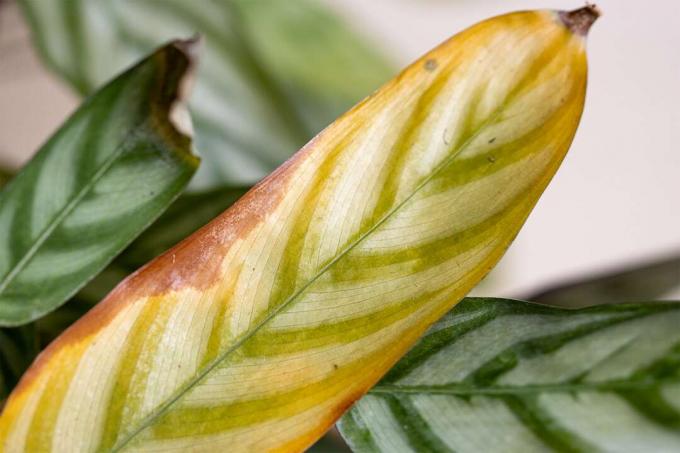
Calathea has yellow leaves: how to save?
When a Coriander (Calathea) gets yellow leaves, the cause is usually a lack of care. In order to save them from dying, a number of countermeasures must be taken, which are described in detail here.

Room bamboo: 13 tips for care
The room bamboo impresses with its compact growth habit and is a densely grown houseplant. The ten most important tips for caring for the sweet grass are compiled for you here.
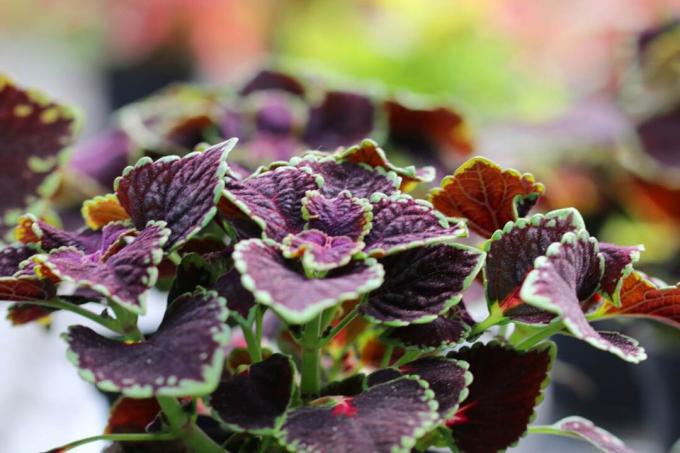
Coleus blumei: 21 tips for the red nettle
The colored nettle is a warmth-loving and easy-care foliage plant. The coloring of the leaves varies from monochromatic to variegated with a wide variety of drawings. Spectacular splashes of color can be set in beds, balcony boxes and tubs or as a houseplant.
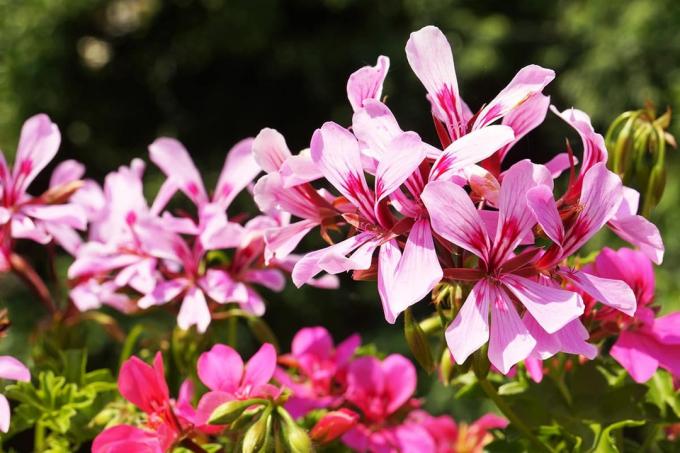
Scented houseplants: 25 scented plants for the home
An apartment without indoor plants is hardly conceivable. Scented plants in particular have a very special effect. Not only are they decorative, they can lighten the mood and rival any artificial home fragrance.

Lucky chestnut, Pachira aquatica: care from A to Z
The care of the lucky chestnut does not require any special expertise. However, if you know the way of life of this ornamental plant, you can better adapt site conditions and care measures to your needs. The plant can be easily propagated if a plant already exists.

Rubber tree: 13 care tips for Ficus elastica
The rubber tree is one of the most popular indoor plants. It is available in different varieties, easy to care for and stands out for its large leaves, which are colored in intense shades of green. Within a few years, it grows into a state small tree without much effort.

